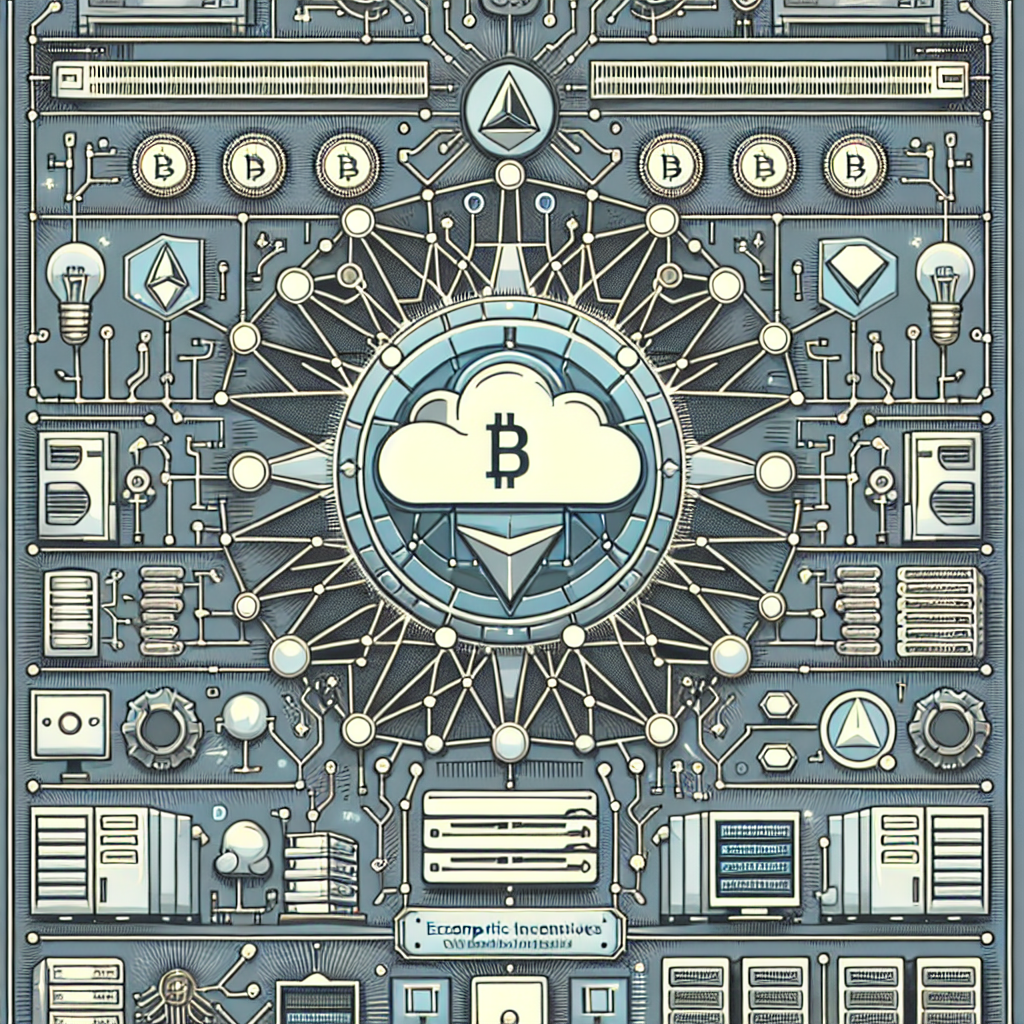Altcoins
Revolutionizing Infrastructure: How Elastos and Fleek Network Drive Economic Incentives in Decentralised Physical Infrastructure Networks (DePIN)

Decentralised Physical Infrastructure Networks (DePIN) are redefining our understanding of infrastructure by leveraging blockchain technology across various sectors. These networks facilitate the use of digital and physical resources, allowing individuals to contribute resources such as storage, bandwidth, and energy in exchange for cryptocurrency rewards. The underlying principle of DePIN is that decentralised systems can offer enhanced resilience, efficiency, and accessibility compared to traditional centralised models.
At the core of these innovative networks lies the concept of economic incentives. The effectiveness of DePIN relies heavily on attracting contributors and ensuring long-term viability through the right incentive structures. This article delves into how various companies are pioneering the future of DePIN by implementing well-crafted incentive models, examining what drives these networks in practical applications.
Economic incentives are fundamental to the success and scalability of DePIN networks. Jonathan Hargreaves, the Global Head of Business Development at Elastos, emphasizes that the decentralised nature of these networks allows participants to provide essential resources and earn cryptocurrency in return. This model creates a more adaptable and cost-effective alternative to conventional infrastructure, making it easier to drive participation.
Harrison Hines, Co-founder of Fleek Network, further elaborates on the pivotal role of economic incentives in infrastructure networks, comparing DePIN to ride-sharing services like Uber. He states that the potential to earn income by driving is what fuels the entire Uber ecosystem. “Without economic incentives, there is no Uber, and there is certainly no DePIN,” Hines asserts, underscoring how incentives are critical in fostering both participation and expansion within these networks.
Unlike traditional blockchain systems that often depend on mechanisms like Proof of Work (PoW) or Proof of Stake (PoS), DePIN networks uniquely reward participants for providing physical infrastructure. Contributors can earn tokens for supplying vital resources such as bandwidth, storage, or sensor data, which are essential for sustaining the decentralised network.
A prime example of this model can be seen in Helium, where users, referred to as “Hotspot Hosts,” offer wireless coverage for Internet of Things (IoT) devices and receive tokens in compensation. This decentralised approach challenges the conventional telecommunications industry by democratizing access and breaking down barriers to infrastructure services.
Hines notes that while DePIN projects initially compensated service providers using tokens, there is a noticeable shift towards the use of USD-pegged stablecoins for payments. He argues that this transition is essential for achieving long-term sustainability, as it helps mitigate the volatility associated with native tokens.
Tokenomics, the study of how tokens are distributed, earned, and utilized, plays a crucial role in the sustainability of DePIN projects. For instance, Elastos and Blockcast have developed intricate token models aimed at aligning contributors’ incentives with the growth of the network.
Elastos employs a Burn and Mint Equilibrium (BME) model to control token supply. This system works by burning tokens when utilized within the ecosystem and minting new tokens as rewards for network participants. The BME model not only maintains a healthy balance between supply and demand but also encourages long-term engagement among users, facilitating decentralised digital rights management and peer-to-peer content sharing on the Elacity platform.
Blockcast, on the other hand, adopts a phased approach to its token distribution. Initial rewards are linked to the establishment and maintenance of nodes in a Proof-of-Coverage model, evolving as the network matures to reward participants for delivering real-world services like data streaming and storage. Omar Ramadan, CEO of Blockcast, emphasizes that token incentives are essential in overcoming the “cold start” problem often encountered by DePIN networks. This problem refers to the challenges of attracting initial users and contributors while the network is still developing. By providing cryptocurrency rewards, Blockcast incentivizes early participants to supply computing power and bandwidth, thus facilitating network growth.
According to Hines, the interconnectedness of tokenomics and economic incentives is vital in DePIN networks. He points to Helium’s successful Burn and Mint Equilibrium as a model demonstrating early success in balancing token supply while promoting real-world usage.
As DePIN projects evolve, they face the challenge of balancing immediate incentives to attract early participants with the necessity of maintaining long-term network health. In the initial phases, offering substantial rewards may help establish the network, but sustainable growth relies on transitioning to a reward structure based on service quality. This phased distribution of rewards ensures that incentives remain aligned with the overall well-being of the network.
Security and regulatory compliance are additional areas where economic incentives play a critical role within DePIN networks. In projects like Filecoin, participants are required to stake tokens as collateral, which can be forfeited for malicious actions or subpar performance. This mechanism incentivizes contributors to act in the network’s best interest, thus preserving reliability and security.
Furthermore, regulatory frameworks significantly influence the structure of these incentives. In regions with strict data protection regulations, such as the General Data Protection Regulation (GDPR) in Europe, projects must ensure that data sharing and storage rewards adhere to privacy standards, adding complexity to incentive model design. Hines highlights that staking and slashing mechanisms in DePIN projects are intrinsically linked to the network’s security and integrity, deterring bad actors from disrupting the system.
Looking ahead, the future of DePIN networks hinges on ongoing innovation in incentive structures. As decentralised models gain traction across various sectors—from energy to healthcare—robust and adaptable tokenomics will become increasingly essential.
We anticipate significant growth in areas such as AI-driven data services, where decentralised frameworks can offer enhanced security, transparency, and efficiency. The true success of DePIN initiatives will stem from their ability to adapt and refine their incentive models to meet the demands of an evolving digital landscape. A flexible and responsive approach to token models will empower DePIN networks to flourish in the long term, continuously rewarding real-world contributions and ensuring that incentives align with network growth.
-

 Press Releases1 year ago
Press Releases1 year agoGaming Technologies of the New Time!
-

 Altcoins10 months ago
Altcoins10 months agoBitcoin Declines Below $80K: deVere CEO Nigel Green Remains Bullish on Long-Term Outlook Following Strategic U.S. Bitcoin Reserve Announcement
-

 Bitcoin1 year ago
Bitcoin1 year agoBitcoin Surges Past $64K as SEI and POPCAT Lead Daily Crypto Gains on September 25
-

 Altcoins10 months ago
Altcoins10 months agoCalls for Enhanced Discussion on Bitcoin as Brazil’s Reserve Asset: A Move Towards ‘Internet’s Gold’
-

 Press Releases2 years ago
Press Releases2 years agoEvo Exchange: Redefining the Decentralized Exchange Landscape
-

 Bitcoin6 months ago
Bitcoin6 months agoGrayscale Investments Submits Draft Registration for IPO, Aiming for Public Trading in U.S.
-

 Press Releases1 year ago
Press Releases1 year agoCODE, a Newly Born Project Brings Decentralization Back to the Main Menu
-

 Bitcoin6 months ago
Bitcoin6 months agoPeter Schiff Critiques New Crypto Legislation, Claims Bitcoin (BTC) Gains are Short-Lived




